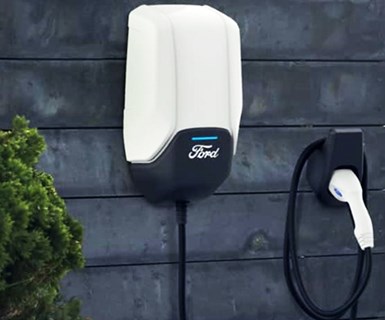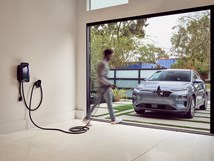Ford Touts EV Charging Options
Ford Motor Co. will offer buyers of its upcoming electric vehicles a range of charging options from home-based systems to access to more than 35,000 public charging points in the U.S.
#hybrid
Ford Motor Co. plans to offer buyers of its upcoming lineup of electric vehicles a range of charging options, including several home-based systems and access to more than 35,000 public charging points in the U.S.
The carmaker, which plans to launch a Mustang-inspired electric crossover next year, expects most EV charging will be done at home.
All future Ford EVs will come with a mobile charging cord that can accommodate 240-volt outlets, which the carmaker says can add 22 miles of driving range per hour to a vehicle’s battery. The cord also can be used with a standard 120-volt outlet that replenishes the battery at a rate of only three miles of range per hour.

Through a partnership with Amazon Home Services, Ford also will offer customers the option to have a fast-charging (adding 32 miles per hour) wall unit installed. Pricing hasn’t been announced.
The public network includes more than 12,000 stations. Customers can locate facilities and automatically pay for charging through the FordPass Charging Network app, which will be free for the first two years of vehicle ownership.
Ford is working with Greenlots to build a multiple provider network. This includes VW-backed Electrify America stations with 150-kW chargers. Such units can provide 47 miles of range in 10 minutes and replenish the battery from 10% to 80% capacity in 45 minutes.
RELATED CONTENT
-
GM Develops a New Electrical Platform
GM engineers create a better electrical architecture that can handle the ever-increasing needs of vehicle systems
-
on lots of electric trucks. . .Grand Highlander. . .atomically analyzing additive. . .geometric designs. . .Dodge Hornet. . .
EVs slowdown. . .Ram’s latest in electricity. . .the Grand Highlander is. . .additive at the atomic level. . .advanced—and retro—designs. . .the Dodge Hornet. . .Rimac in reverse. . .
-
On Fuel Cells, Battery Enclosures, and Lucid Air
A skateboard for fuel cells, building a better battery enclosure, what ADAS does, a big engine for boats, the curious case of lean production, what drivers think, and why Lucid is remarkable








